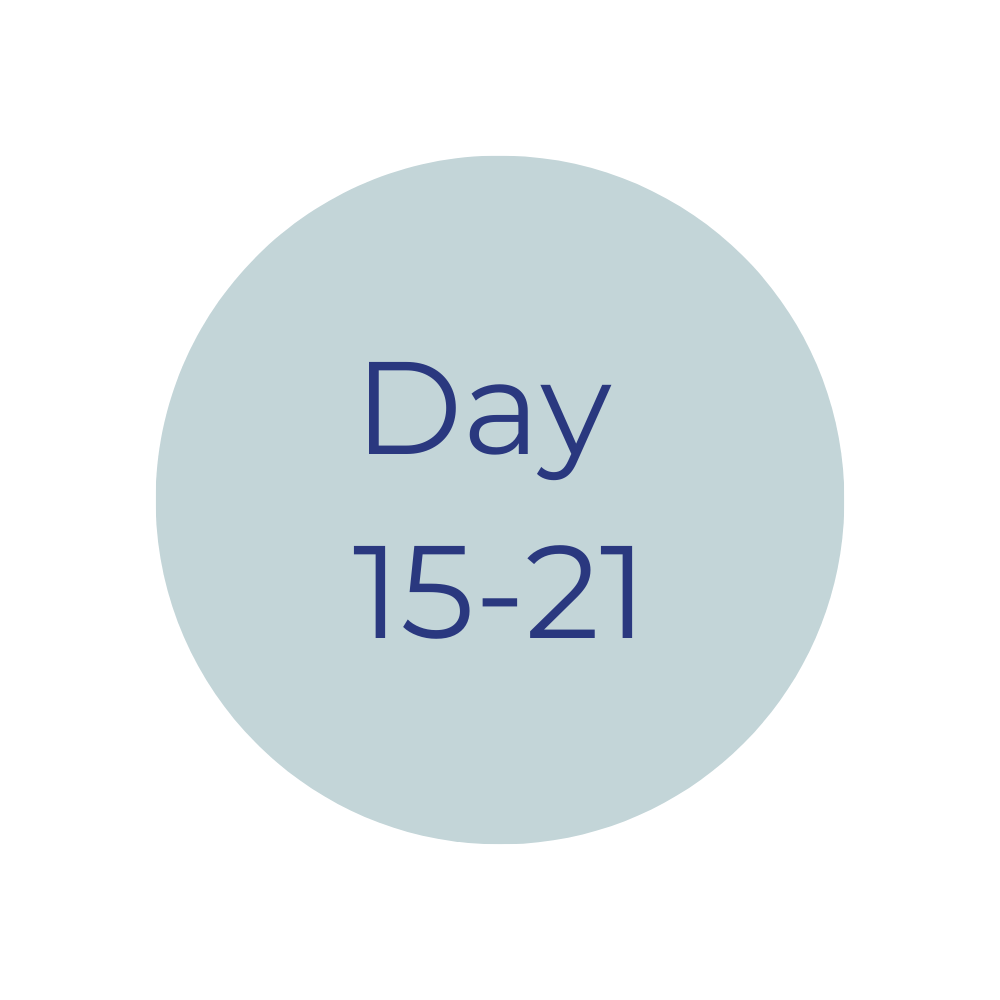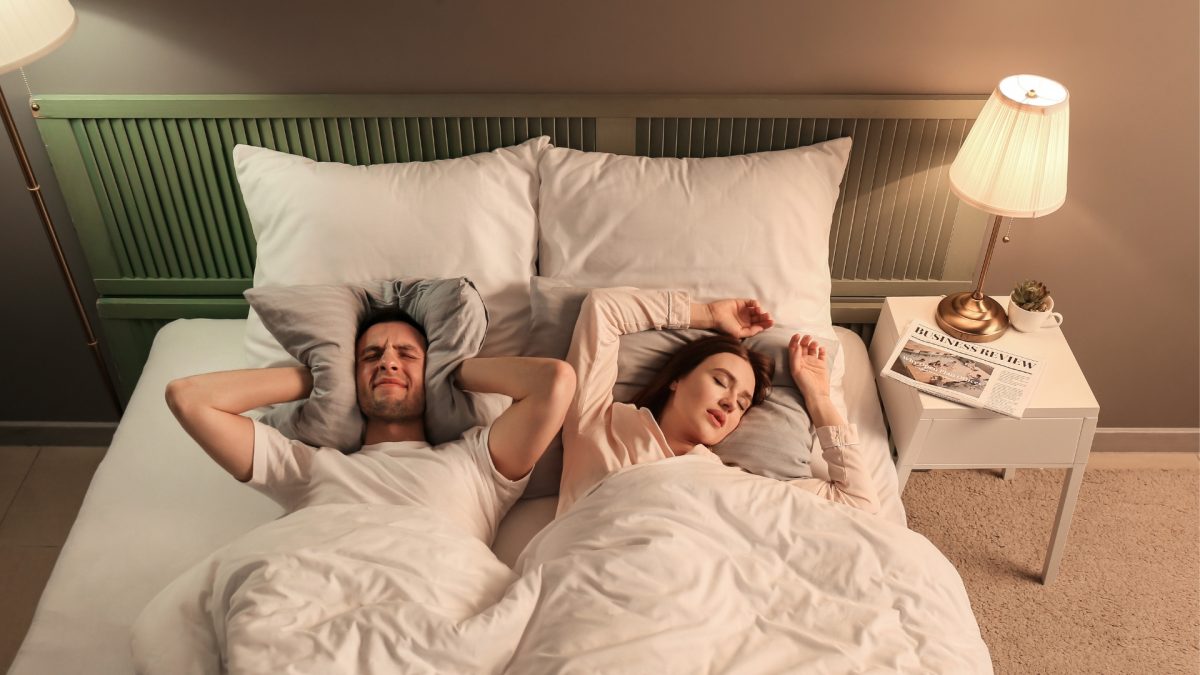Fact Checked
Intus Healthcare’s writers, customer service team, and sleep experts review and ensure this information is accurate.
Last updated on March 7th, 2024 at 10:29 am
A personal account of using A MAD.
The Oniris Mandibular Advancement Device (MAD) is the leading off-the-shelf mandibular device for snoring and Sleep Apnoea, clinically proven to be as effective as a custom-made oral appliance. Habitual snoring occurs in around 44% of males and 28% of females (1) between ages 30 and 60; however, not everyone who snores has a sleeping disorder like Obstructive Sleep Apnoea (OSA).
The device is clinically tested and proven to help reduce or eliminate snoring and can help reduce the symptoms of mild and moderate Sleep Apnoea and help reduce teeth grinding. We asked a customer whose snoring had progressively worsened over the last six months to document their experience using the Oniris MAD.
Can you tell us how and why you chose the Oniris?
To be honest, I was a little embarrassed about trying an anti-snoring device; I just didn’t consider myself a candidate for snoring therapy. I have a healthy BMI, and I am fit and healthy, but I had few options left. I was experiencing daily pain and discomfort in my throat and ears, which after exploring other medical reasons, I could only put down to snoring.
Once I got my head around it, I looked at three different devices, and I chose the Oniris because the moulding trays looked like they would be the most comfortable. I also liked the idea that I could remould the trays over and over if I did it wrong.
I was also unsure how much I would need to advance my jaw, so the flexibility of this device was appealing. I could wear it on the standard setting and only choose to advance it slowly if needed.
The Oniris is heated in water and moulded at home; how easy or difficult did you find that process?
The process was easy. I have used the same process for sports mouthguards for children before. I did have to reheat and remould it once, though. The first time I bit down when the tray was not far enough in. The second time I felt like it was perfect. I tried not to overthink it.
The Oniris MAD
Designed to gently pull your lower jaw forward during sleep to allow air to pass freely through your throat and prevent obstructions.
The cost-effective device is the leading off-the-shelf mandibular device for snoring and Sleep Apnoea.
A clinical study found 94% of users were satisfied or very satisfied with the device!

How was your first night?
The first night was weird. The device felt enormous and tight. It was difficult to open and close my mouth, and I was unsure how to deal with excess saliva. I soon got the hang of it.
I didn’t wear it to bed on the first night; I only wore it whilst watching TV before bed. I had read that it was advisable to try and get used to the feeling of wearing it before trying to wear it for the whole night. Although I was feeling impatient, I decided to follow the guidance.
When was your first full night?
It took five days before I wore the device all night. Prior to that, I wore it for several hours at the beginning of the night and then removed it. There was some discomfort in those early days, and my teeth were sensitive. There were a couple of nights in the first week when I removed it in the early hours. Any tooth discomfort I felt was gone by the time I got up.
On day five, I wore the device all night. I woke in the morning with discomfort in my incisor, but the pain in my throat and ears showed signs of improvement. According to my husband, I did not snore at all – result!
Can you tell us more about the tooth pain you mentioned?
I expected tooth pain because I had read about that being a possibility. The pain was not bad; it was a little like the feeling you have when orthodontic braces are tightened (but not so bad). Each morning, in the beginning, there would be soreness, but by the middle of the day, it was completely gone.
My incisor took a couple of days to settle down, and by around the 24th day, the tooth discomfort had really settled. Now, as I go into week 4, it is hardly noticeable. In one more week, I think it will be gone completely.

Did you experience any other side effects?
No, in fact, it is quite the opposite. My body has become so used to the feeling of the device; I occasionally think that I have forgotten to put it in!
How did you find cleaning the device? How easy or difficult did you find that process?
I keep cleaning simple. Each morning I wake, remove the device, and immediately rinse it in cold water using a soft-bristled toothbrush. Then I shake off the excess water and put it back in the protective case.
The most important question is, have you noticed a difference?
100%. After the third full night of wearing this device, not only had my snoring completely stopped, but the pain in my throat and ears had gone too. My husband remarked about how almost instant the change was, and I feel like I am getting more sleep now too.
I do not regret trying this form of therapy, and I tell everyone about it now. I am not embarrassed anymore; I am amazed by it.
Do you have any advice for people thinking of trying this therapy?
The Oniris has a 30-day money-back guarantee, which makes it an excellent choice for anyone wishing to try this type of therapy. However, I cannot stress enough that it takes a minimum of 30 days to adapt and introducing it slowly is vitally important.
I did quite a bit of reading initially, and apparently, it can take between 30 days and up to 6 months to get used to a MAD, so there may be some benefits I have not experienced yet.
The advancement of a MAD device can begin after the first four weeks. Now you are at that point, have you begun to adjust the device?
No, I haven’t. The device works for me on the standard setting. This alone stops my jaw from falling backwards when I sleep, and it has stopped my snoring.
For now, I will leave it as it is. If this setting is less effective in a few months’ time, I will look at advancing it with the next set of clips.
The first 30 days with the Oniris

Moulding – I did it and then had to redo it because the first time, it wasn’t positioned correctly. Repeated the moulding advice steps. Worn for a very short time before bed. It feels very big and tight. I also experienced lots of saliva.

Worn at bedtime for a very short time.

Worn to bed for a few hours. I woke early morning to remove it. Tooth discomfort is present, but it doesn’t stop me from returning to sleep quickly.

Worn to bed for a few hours. I subconsciously woke in the early morning and removed it. Still waking with the usual throat and ear soreness.

Worn to bed all night. I woke with my usual throat and ear soreness but felt better than it had done in a long time. Tooth discomfort on the lower jaw and top incisor.

Worn all night. No ear or throat soreness today. A little tooth discomfort which was primarily on a front incisor.

Worn all night. No ear or throat soreness again today. A little tooth discomfort which was primarily on a front incisor.

Worn all night. The soreness and pain in my ear appear to have gone completely. My incisor is less sore today and didn’t last more than an hour after removing the device.

This morning the tooth, which was delicate yesterday, seems fine, but a little discomfort on my front bottom teeth instead. Nothing prevents eating breakfast, and it didn’t last past mid-morning. I had the weird sensation all day that I was missing something; the feeling of the MAD device feels so normal now that on the drive to work, I felt like I had forgotten to put it in.

Worn all night. My teeth still feel a little weird in the morning. No snoring still, and the ear pain I was having has not returned.

I am wearing the device every night without fail. I put it in just before I sleep and drift off immediately.

The pain in my ears and throat has completely gone since I started wearing the MAD every night. I have also completely stopped snoring. I really couldn’t be happier with the result.

“MADs are beneficial for individuals who snore loudly. By advancing the lower jaw, these devices help to reduce the vibration of soft tissues in the throat, resulting in reduced snoring.
They are a non-invasive treatment option for OSA when compared to Continuous Positive Airway Pressure (CPAP) therapy. Some individuals may find MADs more comfortable and easier to use.
Dental devices are often recommended for individuals who cannot tolerate CPAP therapy or have dental concerns. These devices ensure a proper fit and alignment with the individual’s teeth and jaw.
If you take a sleep study with Intus, we may suggest a MAD as the best treatment option for your snoring and/or Sleep Apnoea severity.”
Read our tips to stop snoring for more helpful advice. If you would like any assistance, please contact us.
References
- Scientific America, 2004. Why do people snore? Available at: https://www.scientificamerican.com/article/why-do-people-snore/ Accessed: June 2023.







